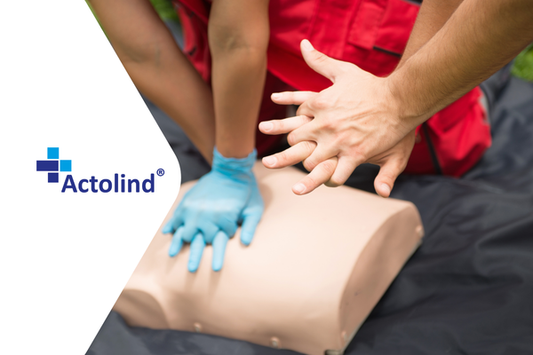First aid saves lives: What to do in the most common emergency situations
World First Aid Day reminds us every year that knowing basic procedures can save a life . You don't have to be a paramedic to be able to help, you just need to know how to respond correctly in the first few minutes.
Let's take a look at situations that can happen to any of us and the basic steps everyone should know.
Traffic accident
Traffic accidents are one of the most common reasons for first aid.
How to proceed:
- Ensure your own safety and the accident site (warning triangle, warning vest).
- Check the condition of the injured – consciousness, breathing, bleeding.
- If someone is not breathing → call 155 and start resuscitation (chest compressions 100–120 times per minute).
- Stop heavy bleeding with pressure or a tourniquet.
Epileptic seizure
Epileptic seizures tend to be dramatic, but they usually resolve on their own.
How to proceed:
- Ensure that the victim does not get injured (remove dangerous objects around).
- Do not intervene in a seizure, do not put anything in the mouth!
- After the seizure has subsided, lay the person on their side (called the recovery position).
- If the seizure lasts longer than 5 minutes → call 155.
Respiratory and circulatory arrest
One of the most critical situations where seconds matter.
How to proceed:
- Check if the person is conscious and breathing.
- If he is not breathing → call 155 and start resuscitation.
- 30 chest compressions + 2 breaths (if you don't dare to take breaths, do only chest compressions).
Massive bleeding
Severe bleeding can be life-threatening within minutes.
How to proceed:
- Apply direct pressure to the wound (with your hand, clean cloth, bandage).
- If the bleeding does not stop → use a tourniquet.
- Keep the person calm and monitor their condition until the ambulance arrives.
Burns
Common at home and outdoors (hot water, sun, fire).
How to proceed:
- Immediately cool the wound with cold running water (10–15 minutes).
- We do not add oils, creams or ice!
- We do not puncture blisters.
- Larger burns or burns on the face → always see a doctor.
Choking and foreign body inhalation
A very common situation in children.
How to proceed:
- If the victim is coughing → let them cough.
- If they are choking → give 5 blows between the shoulder blades .
- If it doesn't help → 5x Heimlich maneuver (sharp pressure on the abdomen below the sternum).
- For children, adjust the intensity – less pressure.
Sports injury
Sprain, fracture, dislocation.
How to proceed:
- Keep the affected limb at rest.
- Apply a cold compress.
- If a fracture is suspected → immobilize the limb and seek medical attention.
Insect sting
Common in summer, but sometimes life-threatening.
How to proceed:
- Remove the stinger if it is visible.
- Apply a cold compress.
- If you have signs of an allergic reaction (swollen tongue, difficulty breathing) → call 155 immediately.
Conclusion
First aid is about quick response, calmness and simple steps . You can handle most situations if you remember the basics: stay safe, call for help and do the most important thing.
Don't forget: your home and travel first aid kit should include a reliable helper for treating minor injuries - for example, Clisodine for wound disinfection or Actolind for moist healing and scar prevention.





